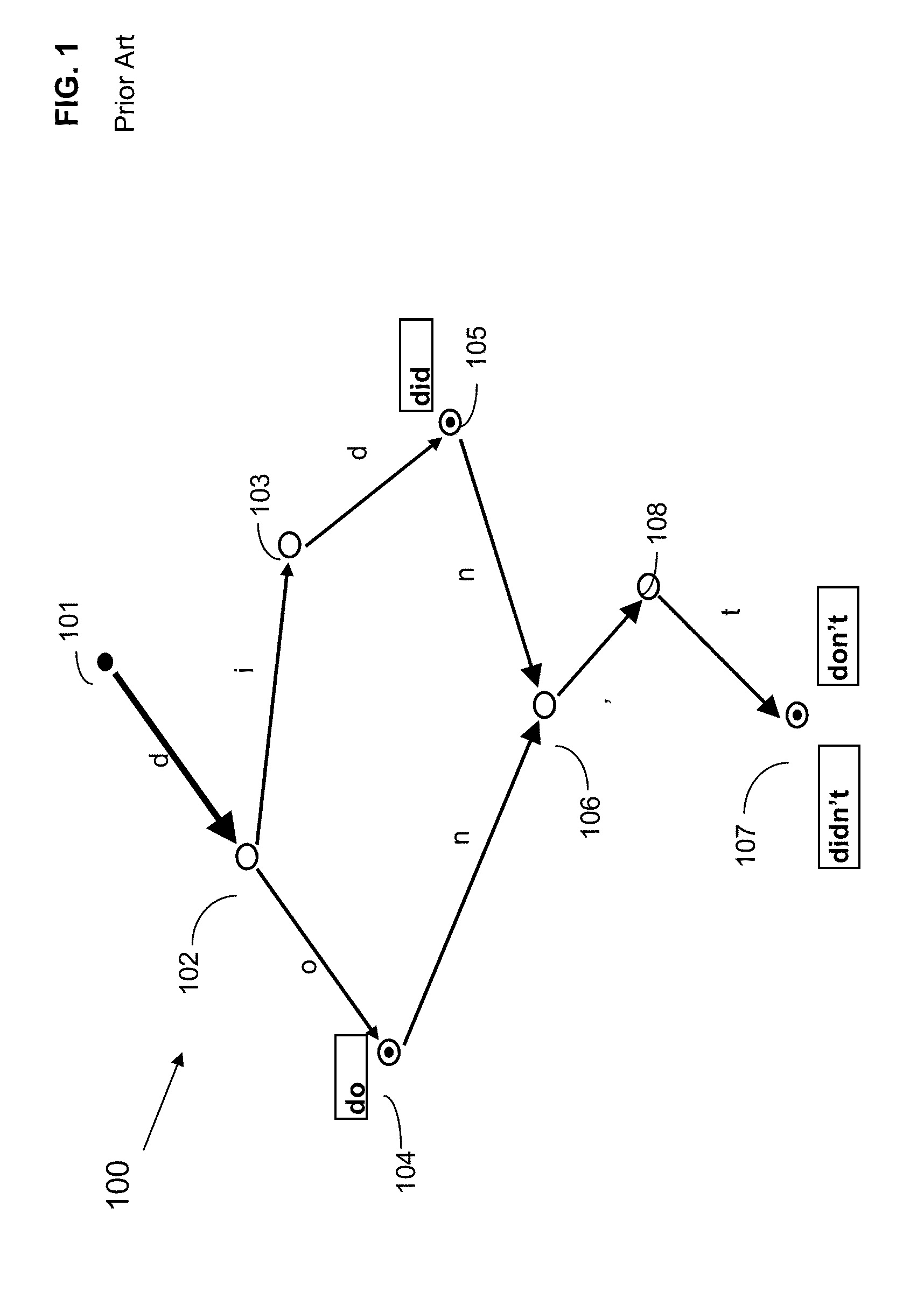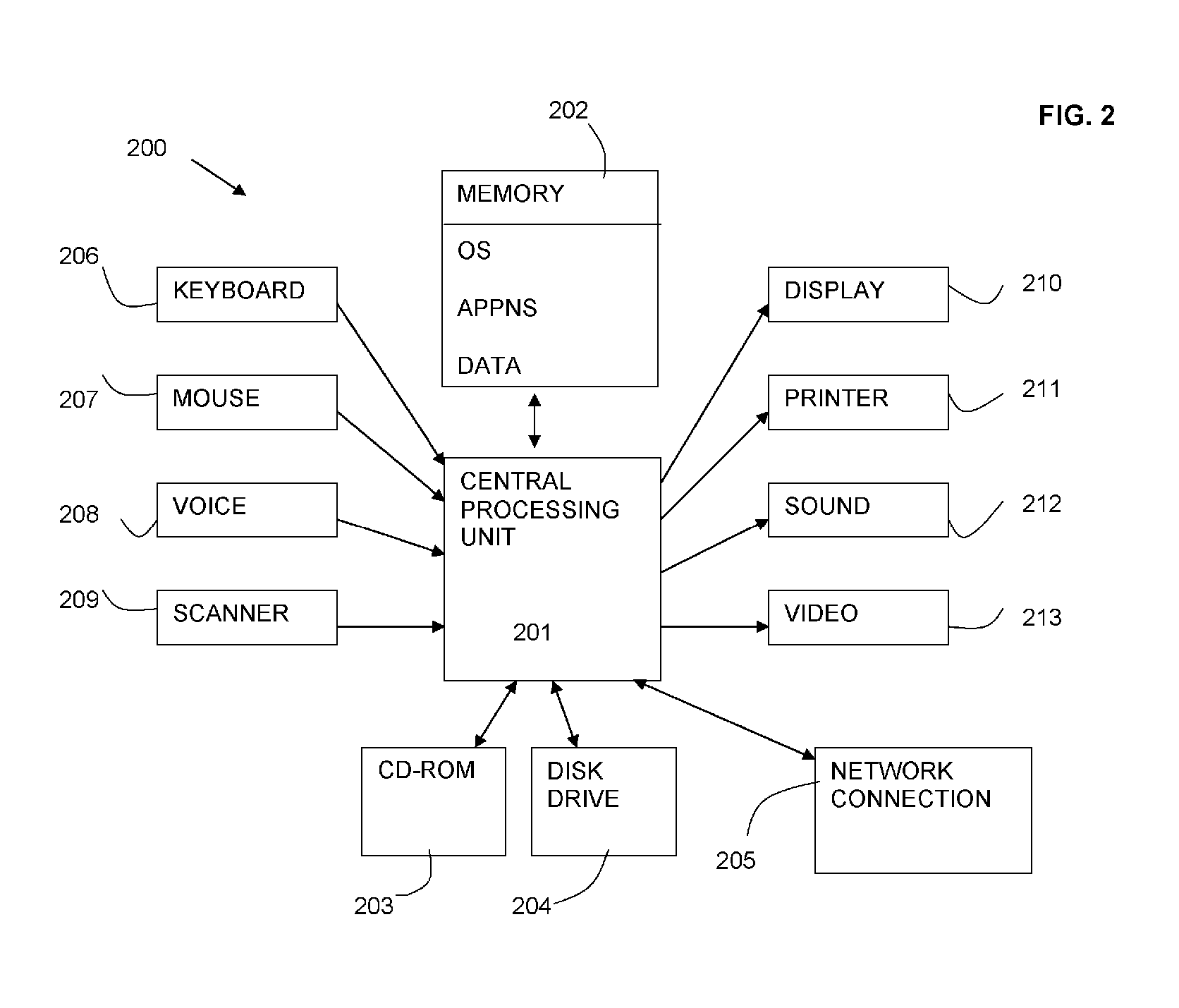Method and system for building and contracting a linguistic dictionary
a linguistic dictionary and system technology, applied in the field of natural language processing, can solve the problems of high cost, often unsuitable, and difficult to store language representations, and achieve the effect of efficiently storing language representations and reducing the size of the dictionary
- Summary
- Abstract
- Description
- Claims
- Application Information
AI Technical Summary
Benefits of technology
Problems solved by technology
Method used
Image
Examples
example 2
[0066]
OperationExplanation~~~Delete 3 characters ‘ing’~~~~hInsert ‘h’, delete next 4 characters~s!~~~Delete next 3 characters, accept 1 character, insert‘s’, delete 1 character~~~~~shInsert ‘sh’, delete next 5 characters~i!!~~~Delete next 3 characters, accept 2 characters, insert‘I’, delete 1 character~~is!~~~Delete next 3 characters, accept 1 character, insert‘is’, delete next 2 characters~~~!~~shInsert ‘sh’, delete next 2 characters, accept 1character, delete next 3 character{circumflex over ( )}f!!!~~~Delete next 3 characters, accept next 3 characters,insert ‘f’ , delete the remaining characters{circumflex over ( )}fi!!~~~Delete next 3 characters, accept 2 characters, insert‘fi’, delete the remaining characters{circumflex over ( )}fis!~~~Delete next 3 characters, accept 1 character, insert‘fis’, delete the remaining characters{circumflex over ( )}fishInsert ‘fish’, delete remaining characters
[0067]As is shown in Example 2, there are twelve possible transform codes, for the surfac...
example 3
[0069]
set surface;set normalized;gatherCode(“”, 0, 0); / / ”” presents an empty stringvoid gatherCode(String code, int surfacePosition, intnormalizedPosition){if(surfacePosition == surface.length( ) and normalizedPosition= =normalized.length( )){replace opening sequence of codeDelete by codeDeleteAllprint code;return;}if(surfacePosition == surface.length( )) / / insertion{gatherCode(code+normalized.charAt(normalized),surfacePosition,normalizedPosition+1);return;}if(normalizedPosition = = normalized.length( )) / / deletion{gatherCode(code + codeDelete, surfacePosition + 1,normalizedPosition);return;}if(normalized.charAt(normalizedPosition) = =surface.charAt(surfacePosition){ / / exact matchgatherCode(code+codeAccept, surfacePosition+1,normilisedPosition+1);} / / insertiongatherCode(code + normalized.charAt(normalizedPosition),surfacePosition,normalizedPosition + 1); / / deletiongatherCode(code + codeDelete, surfacePosition + 1,normalizedPosition;}
[0070]Although the parsing component parses 305 the s...
example 4
Surface form:
Normalized form:
[0072]Possible transform codes parsed from right to left:
[0073]
Transform codeExplanation !~~~delete next 3 letters, accept one letter, insert ~~~!insert , accept 1 letter, delete next 3 letters~~~~insert , delete next 4 letters{circumflex over ( )}insert , delete all remaining letters
[0074]Therefore as shown in Examples 2 and 4 there are many transform codes which can be generated for any given surface form. To store each of the transform codes with each terminal node in the trie-based dictionary would require a large amount of storage. Therefore there is a need to contract the trie-based dictionary further. As already explained for each surface form there may be more than one transform code. The same transform code may be generated for a number of surface forms. Therefore it is possible to share transform codes across terminal nodes.
[0075]In order to contract the trie-based dictionary 100 further it is necessary to minimize the number of terminal n...
PUM
 Login to View More
Login to View More Abstract
Description
Claims
Application Information
 Login to View More
Login to View More - R&D
- Intellectual Property
- Life Sciences
- Materials
- Tech Scout
- Unparalleled Data Quality
- Higher Quality Content
- 60% Fewer Hallucinations
Browse by: Latest US Patents, China's latest patents, Technical Efficacy Thesaurus, Application Domain, Technology Topic, Popular Technical Reports.
© 2025 PatSnap. All rights reserved.Legal|Privacy policy|Modern Slavery Act Transparency Statement|Sitemap|About US| Contact US: help@patsnap.com



